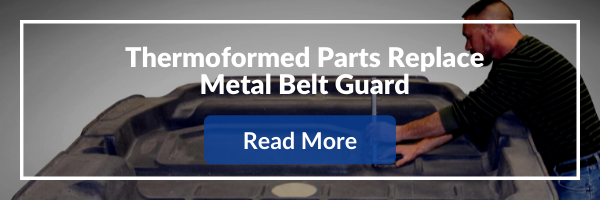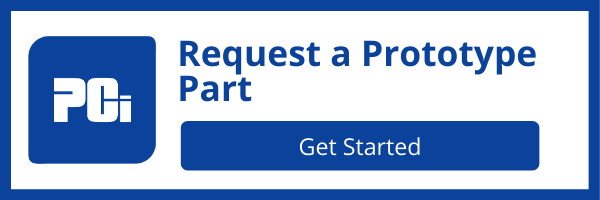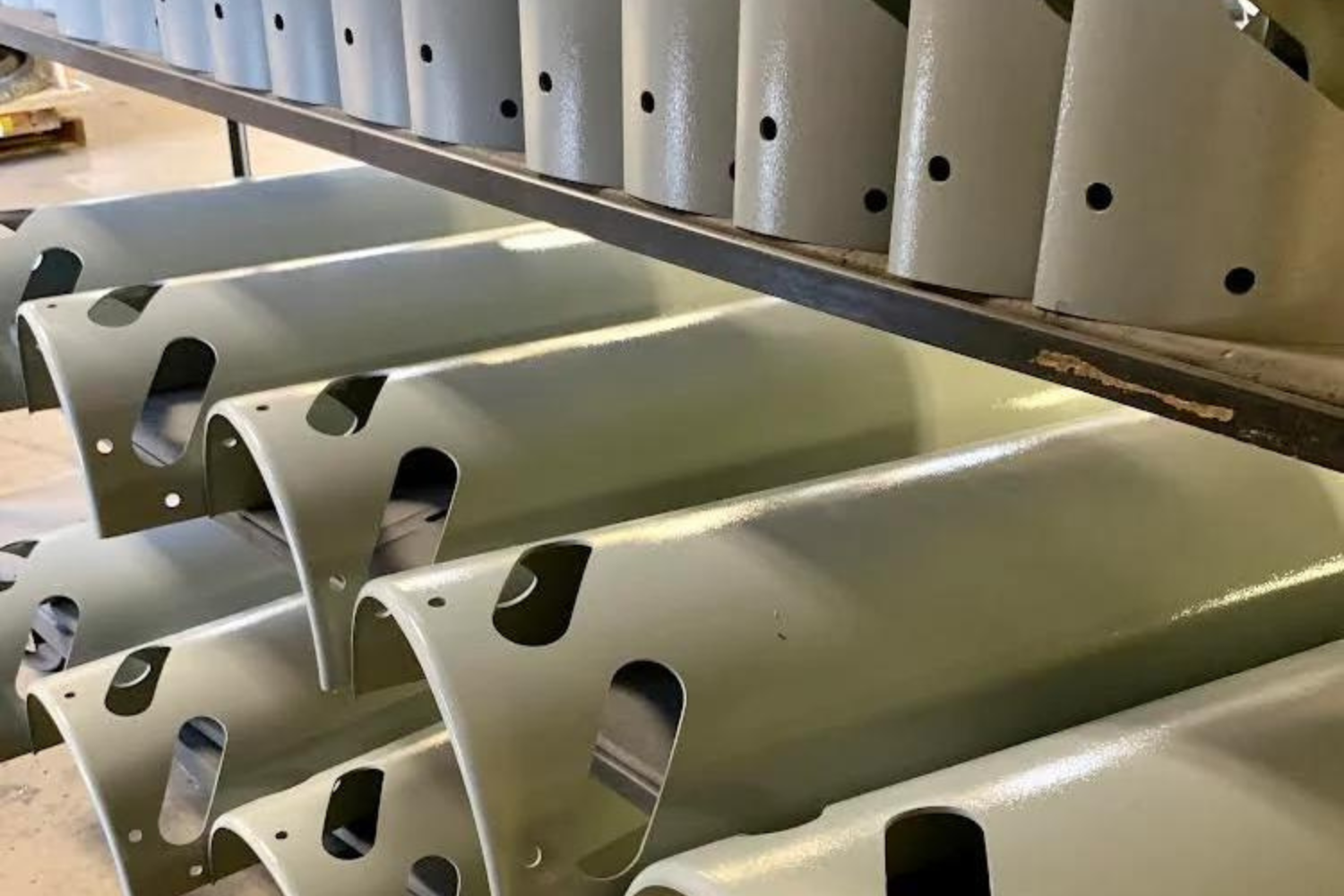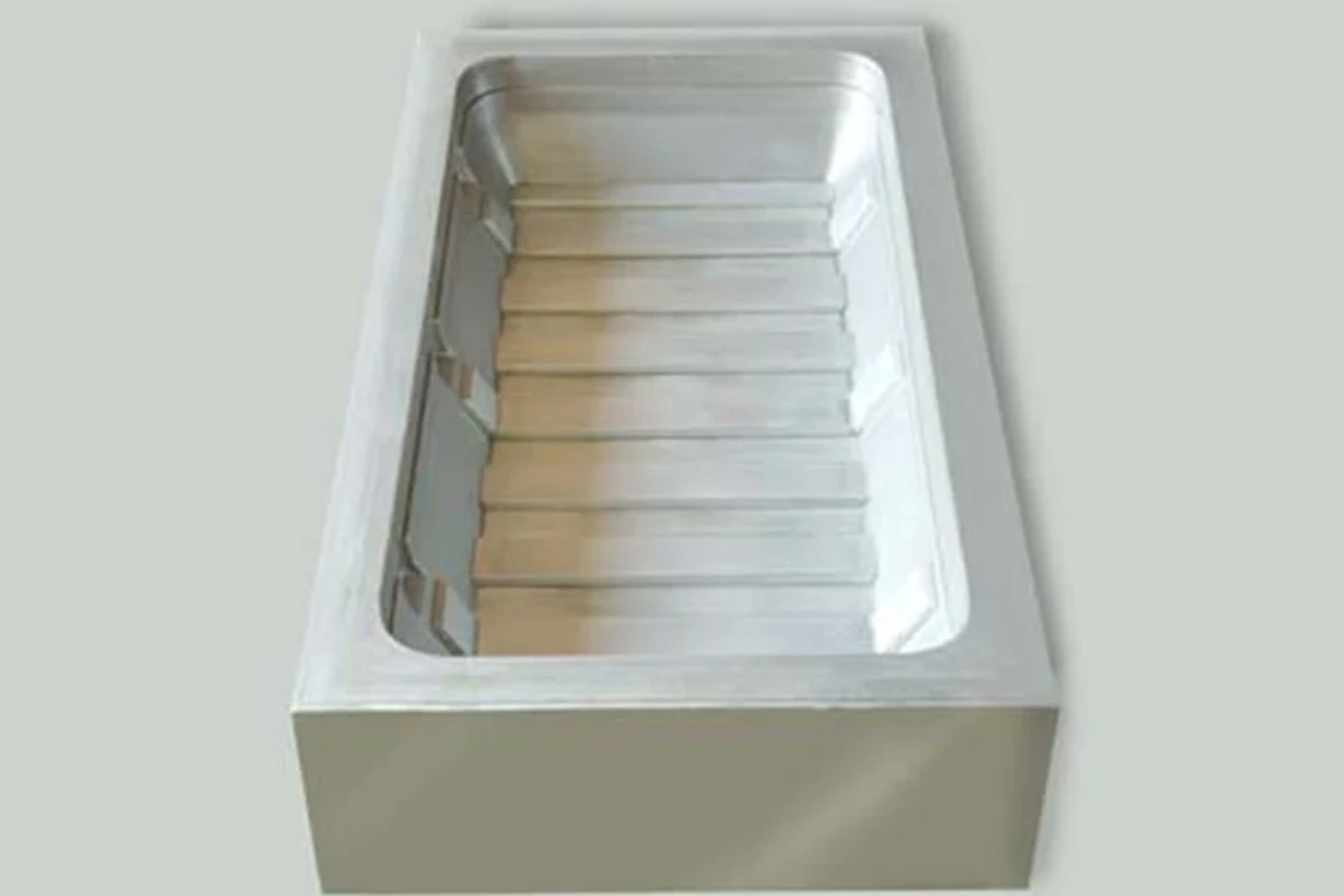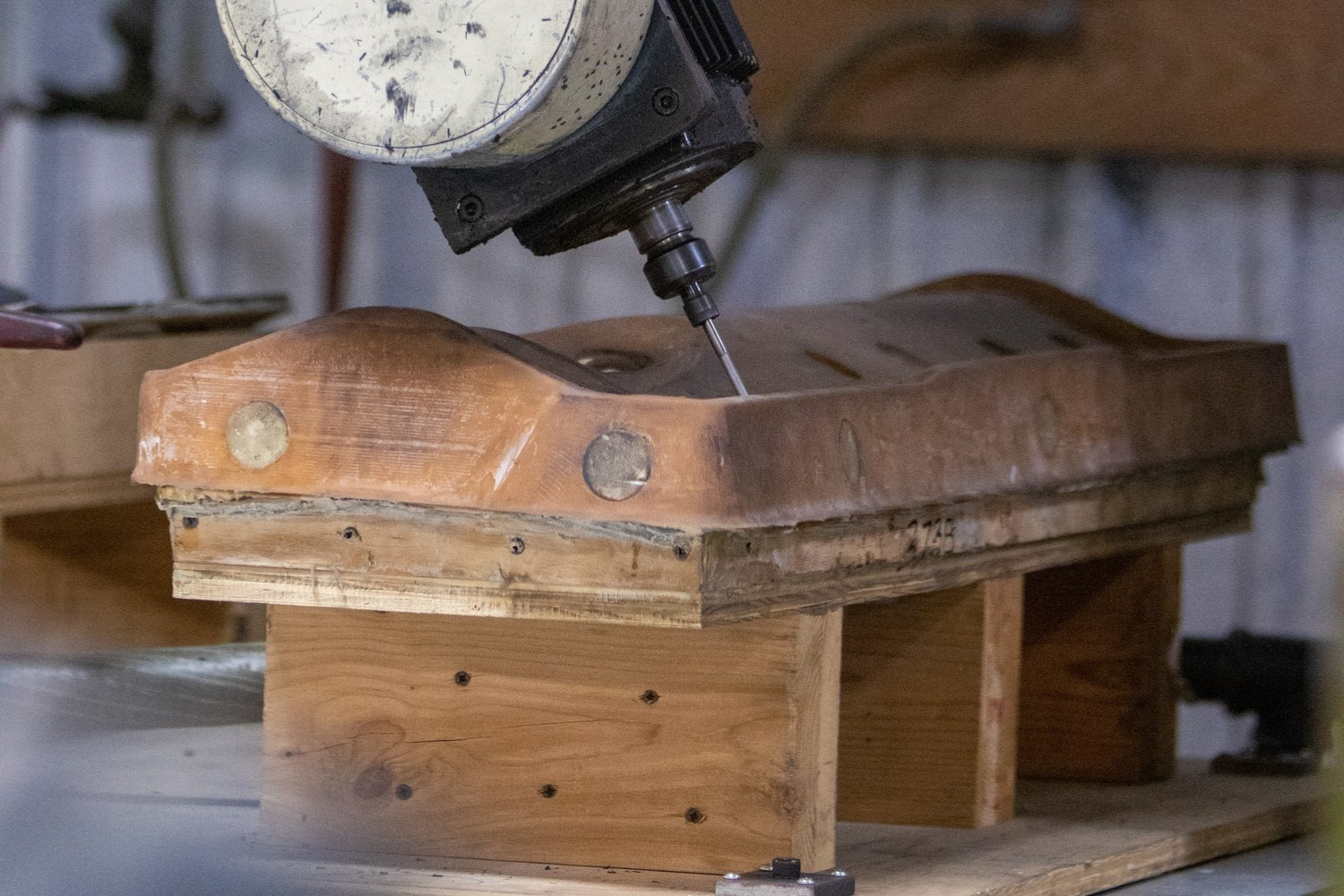PCI focuses on thick gauge thermoforming. This process takes a flat sheet of plastic, heats it up, stretches the material over a mold, then a vacuum is used to remove the air between the sheet and the tooling, forcing the material to conform to the mold. The part is then cooled and trimmed and sent for further processing or assembly.
What makes thick gauge thermoforming unique is the ability to use material up to one-half inch thick.
Thick gauge thermoformed parts are very common and you see them in a wide variety of applications and uses. Because the material is thick gauge the parts are made both in large sizes, we can mold sheets up to six feet by 10 feet, and with a rigid structure.
This combination allows thick gauge thermoformed parts to be used for structural, protective, and harsh environment components like vehicle body parts, enclosures, outdoor structures, shields, barriers, containers, and more.
Thick gauge thermoforming is a flexible process that allows us to create large plastic parts with excellent cosmetics, high chemical resistance, and high impact resistance, with much lower minimum quantity requirements than other plastic processes.
Thick Gauge Thermoforming Tooling
Since thermoforming is a low-pressure process, thick gauge thermoforming tooling is less complicated and less expensive than other plastic molding processes or steel stamping.
PCI builds thick gauge thermoforming tooling using the following materials:
- Wood patterns
- 3D print
- Composite
- Ceramic
- Cast Aluminum
- Temperature Controlled Cast Aluminum
Prototype tooling is an important advantage of this type of thermoforming. We can create tools to make prototype part volumes ranging from 1 - 10 prototypes for wood patterns to multiple thousands using aluminum or temperature-controlled tooling.
Wood, composite, and 3D printed tools allow us to produce prototype parts made from materials like ABS, PVC, and blends.
Ceramic and aluminum tooling can make production parts for most all thick gauge thermoformable materials
Wood, composite, and 3D printed tools require 1-4 weeks lead time to build depending on the design complexity.
Ceramic and aluminum tooling require an 8-12 weeks lead time to build depending on the part size, shape, and detail.
Thick gauge thermoforming allows us to use a wide range of materials to meet many different part and production specifications.
Materials
At Plastic Components, Inc., we use these materials in our thermoforming operations:
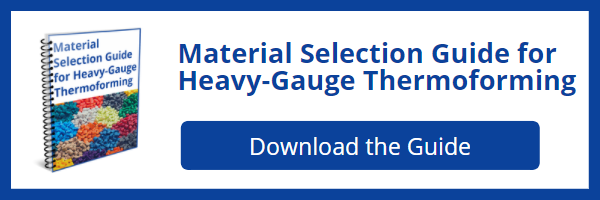 ABS
ABS- Soft-touch foam-backed vinyl
- Rubber
- Polystyrene
- Polyethylene
- Polypropylene
- Fire-rated PVC
- Low-toxic plastics
- Low-smoke PVC
- High-heat nylon PPO
- Polycarbonate
- Antistatic/sound-deadening materials
- Lightweight acoustical materials
- Laminates
- Carpet
These materials are available in a variety of colors, gloss, finish, and textures to meet requirements in industries ranging from automotive to medical to packaging to marine.
The experts at PCI are here to help you find the right material for your application.
Thick Guage Thermoforming Part Design
With your end application the primary focus, your final part requirements will be reviewed to determine the most efficient design. For thick gauge thermoform manufacturing the most important design criteria are:
- The Draw ratio is considered to determine part manufacturability - we look at how tall the part is relative to the surface area of the part. The recommended draw ratio is generally 2:1 (height to width) depending on part geometry but there are exceptions.
- Draft angles are inspected to ensure all individual areas of the part meet your design requirements of the part as a whole. A minimum of 3 degrees draft is optimal with lesser degrees draft resulting in higher startup and part costs.
- The thickness of the finished part is considered. We specialize in thick gauge thermoformed parts to meet durability and rigidity specifications.
- Materials required for the application will also factor into the dimensional design of the part and the recommended tooling.
Please reach out to us anytime if you have any questions about thick gauge thermoforming!
